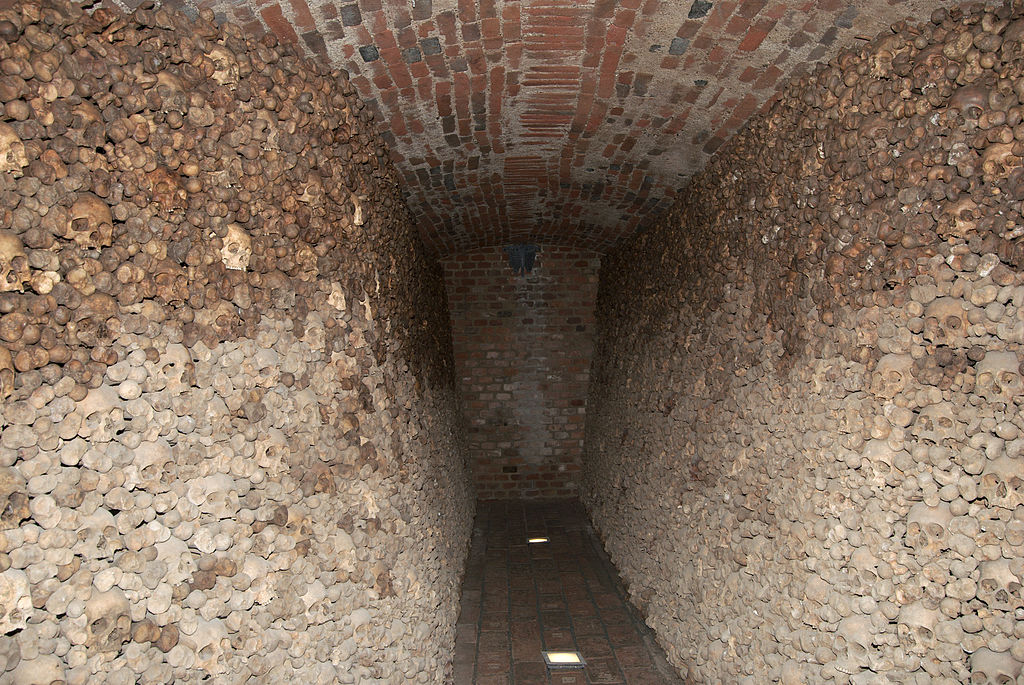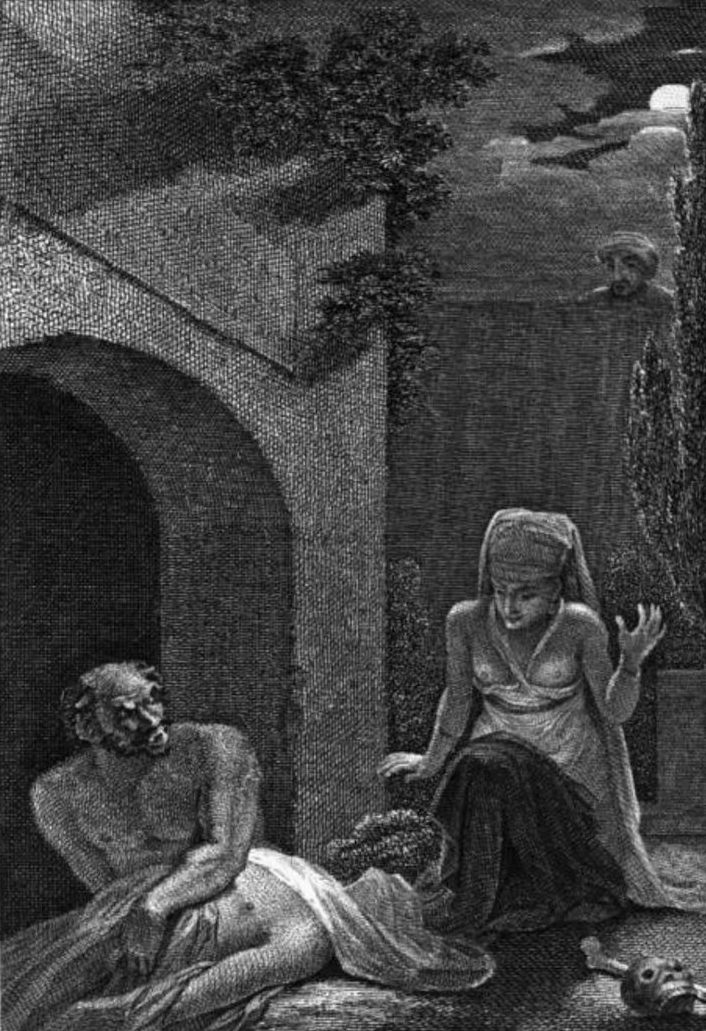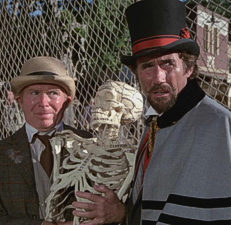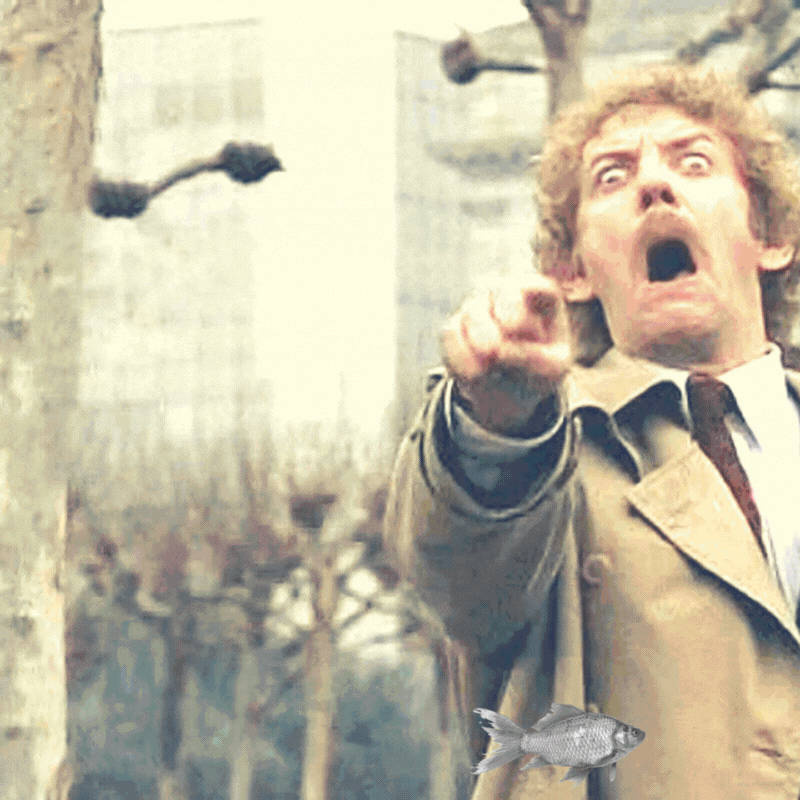Category: Body snatchers
-

Brno Ossuary holds the remains of over 50 thousand people
Brno Ossuary is an underground ossuary in Brno, Czech Republic. It was rediscovered in 2001 in the historical centre of the city, partially under the Church of St. James. It is estimated that the ossuary holds the remains of over 50 thousand people which makes it the second-largest ossuary in Europe, after the Catacombs of Paris. The ossuary was founded in the 17th century,…
-

Secondary burial is a feature of prehistoric and historic gravesites which refers to an exhumation and reburial
The secondary burial (German: Nachbestattung or Sekundärbestattung), or “double funeral” (not to be confused with double burial in which two bodies are interred together) is a feature of prehistoric and historic gravesites. The term refers to remains that represent an exhumation and reburial, whether intentional or accidental. Examples of secondary burial are known from the Paleolithic period, (including the Middle Paleolithic Mousterian culture and the Upper Paleolithic Magdalenian culture) and continuing through the Mesolithic period into the Neolithic period. The…
-

Ghouls (and a few other things)
The Ghoul A Monstrous Mashup of Myth and Macabre Meet the ghoul, a creature so delightfully demonic it’ll make you shiver with excitement. Born from the mystical realms of pre-Islamic Arabian folklore, this monstrous humanoid has evolved into the ultimate symbol of undead terror in modern fiction. Think of it as the goth cousin of…
-

Ghoul Busters: Indianapolis guards its dead (or does it?) by Stephen J. Taylor
JANUARY 24, 2015 STEPHEN J. TAYLOR Hoosier State Chronicles: Indiana’s Digital Newspaper Program From the late 1800’s into the early years of the 20th century, Indiana’s capital city had a body problem. How to protect people who were already dead? Around 1900, even supernatural visitors to the city’s cemeteries would not have been surprised to find “the quick” prowling among the…
-

The Graves Violated – Not Very Many Bodies Are Left In Greenlawn Cemetery (Indianapolis Journal, 1899)
GRAVES VIOLATED. The city owns a strip of ground, acquired from the squatters along the river front, immediately adjoining the cemetery and extending to the river, and if successful it is contemplated merging the two tracts into one new park. This policy being understood by a number of families, former members of which were buried…
-

A coffin, a corpse and a baseball field: The strange history of Indianapolis’ Greenlawn Cemetery (by Dawn Mitchell, IndyStar)
by Dawn Mitchell, IndyStar, April 17, 2019 It’s not uncommon during excavation for new construction in Indianapolis that one might unearth artifacts, such as bottles, blackboards, even safes. The discovery of a coffin in 1986 might have been a shock to some, but for those who were acquainted with the history of the area, it was to be…
-

It is difficult to choose a few quotes from this halloweenish medical article from 1974
The 'Bottleneck In Bodies' Has Created The Agonizing Ethical Dilemma: Who Shall Live and Who Shall Die? By David Dempsey, Oct. 13, 1974
-
Andreas Vesalius (1514 – 1564) was a 16th-century anatomist, physician, and author who is often referred to as the founder of modern human anatomy
Andreas Vesalius (Latinized from Andries van Wezel) (31 December 1514 – 15 October 1564) was a 16th-century anatomist, physician, and author of one of the most influential books on human anatomy, De Humani Corporis Fabrica Libri Septem (On the fabric of the human body in seven books). Vesalius is often referred to as the founder of modern human anatomy. He was born in Brussels,…
-
The Holy Innocents’ Cemetery is a defunct cemetery in Paris that was used from the Middle Ages until the late 18th century
In 1780, the former Holy Innocents’ Cemetery in Paris was closed because of overuse. In 1786, the bodies were exhumed and the bones were moved to the Catacombs.[ “Paris’ Les Innocents cemetery”. Retrieved February 6, 2011.] Many bodies had incompletely decomposed and had reduced into deposits of fat. During the exhumation, this fat was collected and subsequently turned into candles and soap.[“You (posthumously) light up…
-

The tale known as “The Poison Dress” or “Embalmed Alive” features a dress that has in some way been poisoned
The tale known as “The Poison Dress” or “Embalmed Alive“[1] features a dress that has in some way been poisoned. This is a recurring theme throughout legends and folktales of various cultures, including ancient Greece, Mughal India, and the United States. Although lacking evidence suggesting that some American urban legends are directly linked to the classical tales, they share several common motifs.[2] Greek mythology Main…
-
BODYSNATCHING THIEVES
See Something, Say Something
NOTES
- 🧬 Disease Table with Low Sodium Connection
- 🧂 Sodium Reduction and Sodium Replacement: A History of Reformulation and Exploding Diseases, Including Many Diseases Unheard of Before Deadly Sodium Policies
- 🧂 The DEADLY 1500 mg Sodium Recommendation predates the WHO’s formal global sodium reduction push by nearly a decade (and it’s even worse than that)
- 🧬 What Is Beta-Glucuronidase?
- When Sugar Was Salt: Crystalline Confusion and the Covenant of Sweetness
Tags
ADAM ASPARTAME Birds Blood Bones Brain Bugs Cancer Columba Cows crystallography Death Death cults Eggs Etymology Gastrin Gold Growth hormone History Hormones Insulin Liver Mere Perplexity Metal Monkey Business Mythology Paracetamol Plants Poison Pregnancy Protein Religion Reproduction Rocks Salt Slavery Snakes Sodium the birds and the bees Thiocyanate Tobacco Tylenol Underworld Venom zinc

